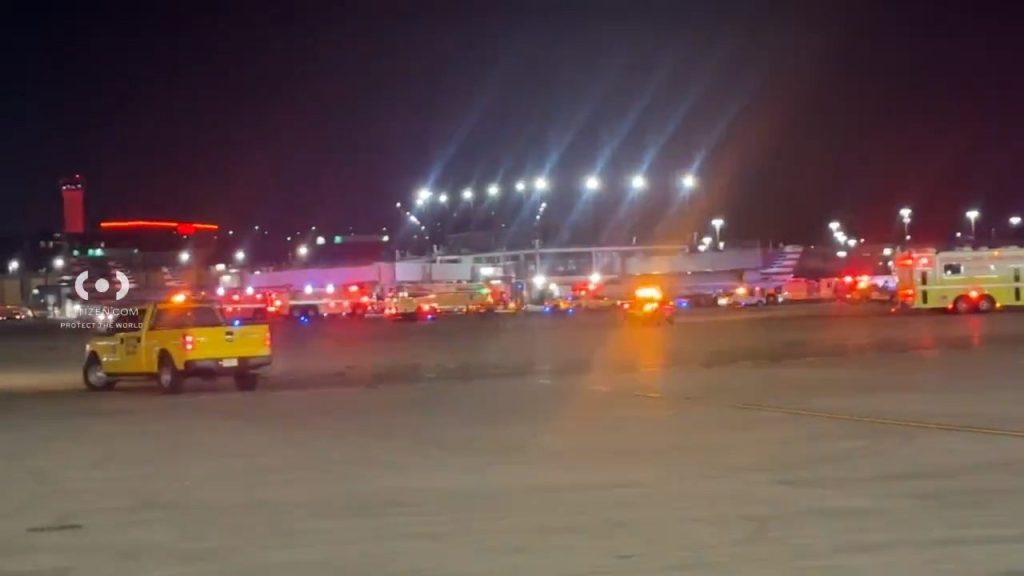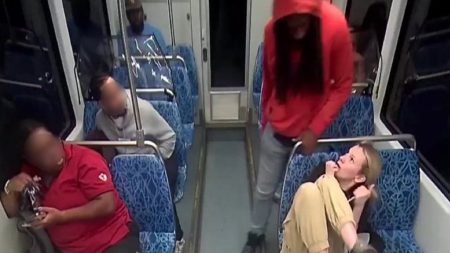On a busy Saturday at Chicago’s O’Hare International Airport, a routine taxiing procedure turned into a critical incident, highlighting the inherent risks associated with ground operations in the bustling aviation environment. A 64-year-old male driver of an aircraft tug, responsible for maneuvering planes on the ground, sustained severe injuries when the wing of an incoming aircraft collided with his vehicle. The impact of the collision caused the tug to overturn, trapping the driver beneath its weight. Emergency responders rushed to the scene and extricated the driver, who was then transported to Lutheran General Hospital in critical condition with injuries to his head and lower body. While initial reports painted a grim picture, subsequent updates indicated that the driver’s condition had stabilized, offering a glimmer of hope amidst the unfortunate circumstances.
The aircraft involved in the incident, a Bombardier CRJ-200 operating as American Eagle Flight 6181, had just arrived from Kalamazoo Battle Creek International Airport in Michigan. As the plane navigated the complex network of taxiways guiding it towards the designated gate, it inadvertently struck the tug vehicle. The precise sequence of events leading to the collision remains under investigation by both the Federal Aviation Administration (FAA) and local authorities. Preliminary findings suggest that the tug may have been crossing the taxiway at the time of impact, raising questions about communication protocols and ground traffic management procedures.
The incident underscores the critical coordination required between ground crews and flight crews to ensure the safety of all personnel operating within the airport’s confines. The intricate dance of aircraft movements, ground support vehicles, and personnel necessitates clear communication channels and strict adherence to safety regulations. While the investigation unfolds, it will delve into factors such as visibility, communication protocols, and ground traffic control procedures to determine the root cause of the collision and prevent similar incidents in the future.
Amidst the chaos and concern surrounding the injured driver, both American Airlines and United Airlines issued statements acknowledging the incident. American Airlines, operating the flight involved in the collision, expressed its commitment to the safety of its customers and team members, emphasizing that a thorough review of the incident would be conducted. United Airlines confirmed that the injured tug driver was one of its employees, offering assurances that he would receive the necessary support and care during his recovery. This incident serves as a stark reminder of the interconnectedness of various entities within the aviation ecosystem and the shared responsibility for safety.
While the immediate focus remained on the well-being of the injured driver, the incident also briefly disrupted the travel plans of the passengers aboard Flight 6181. The FAA confirmed that the passengers were safely deplaned and transported by bus to the terminal, minimizing the disruption caused by the unexpected event. The incident underscores the resilience and adaptability required within the aviation industry to manage unforeseen circumstances and ensure passenger safety even in the face of operational challenges.
The incident at O’Hare International Airport occurred just days after a separate, fatal accident at Charlotte Douglas International Airport involving an American Airlines ramp worker. The proximity of these two incidents further highlights the inherent risks present in airport operations and the need for continuous vigilance in maintaining a safe working environment. While the circumstances surrounding each incident are unique, they collectively serve as a somber reminder of the potential dangers faced by ground personnel and the importance of prioritizing safety in all aspects of airport operations. As investigations into both incidents proceed, the aviation industry will closely examine the findings to identify any systemic issues and implement necessary measures to enhance safety protocols and prevent future tragedies.









